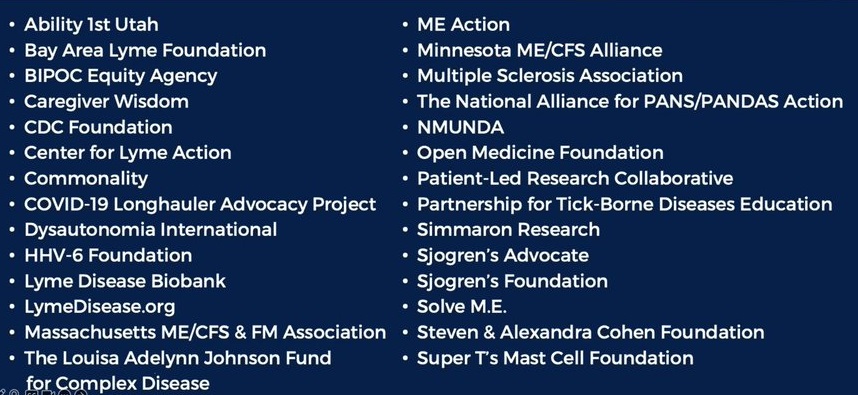CDC now lists Lyme as infection that can cause chronic symptoms

A new page on the CDC website is headlined Chronic Symptoms Following Infections.
It goes on to say: “Infections can sometimes leave people with symptoms that last for weeks to months or longer, even after appropriate treatment.”
(I quibble with their use of “appropriate.” But I’ll leave that alone for now.)
Look what the CDC web page says next–and notice what’s at the top of the list:
Some disease agents that have been linked to chronic symptoms
- Borrelia burgdorferi (bacteria causing Lyme disease)
- Campylobacter
- Chikungunya virus
- Coxiella burnetii (bacteria causing Q fever)
- Dengue virus
- Ebola virus
- Epstein Barr virus
- Enterovirus
- Poliovirus
- SARS-CoV-2 (COVID-19)
- West Nile virus
Some people with chronic symptoms following infections may not know which infection triggered the symptoms, or even recognize that they had an infection before their chronic symptoms began. People with chronic symptoms and unknown preceding infection may be diagnosed with myalgic encephalomyelitis/chronic fatigue syndrome.
Why is this significant?
For years, the CDC and others in the medical establishment have been loathe to acknowledge that Lyme disease can turn chronic.
For a long time, the agency openly endorsed the IDSA Lyme treatment guidelines, which flatly deny that chronic Lyme exists. Even when the CDC removed the link to the IDSA guidelines from their website and softened some language, there was little support for the concept of persistent symptoms of Lyme disease.
Then along came COVID…
COVID-19 changed all that. Soon after the beginning of the pandemic, so many people began experiencing long-term symptoms of the illness that the term “long COVID” entered the national lexicon. Among the most prominent symptoms of long COVID were debilitating fatigue and brain fog–two symptoms also common in people with persistent Lyme disease, ME/CFS, and a host of other chronic conditions.
According to a 2022 CDC survey, nearly 18 million Americans have suffered from long COVID at some point since the pandemic began, and almost 9 million did at the time of the survey.
Those numbers were too big to ignore–and it opened the door for looking at other chronic conditions that shared symptoms with long COVID.
In June 2023, the National Academy of Science, Engineering and Medicine (NASEM), brought together high-level health officials, academic researchers, and knowledgeable patient advocates to look at the question of “infection-associated chronic illnesss.”
And just this past week, patient advocates that have joined IACCPAC–the Infection-Associated Chronic Conditions Patient Advocacy Coalition–held an online webinar introducing the coalition and its goals.
These are the groups currently involved in IACCPAC:
LymeDisease.org’s Lorraine Johnson was among the panelists at the IACCPAC workshop. She emphasized that patients can’t wait for decades-long studies to determine which treatments are best. It’s essential to accelerate research now.
The various conditions listed above are different in many ways, but they share many unique challenges. By working together, we’ll be able to accomplish things that are much harder to do individually.
I believe things are starting to shift. Stay tuned.
TOUCHED BY LYME is written by Dorothy Kupcha Leland, President of LymeDisease.org. She is co-author of When Your Child Has Lyme Disease: A Parent’s Survival Guide, and of Finding Resilience: A Teen’s Journey Through Lyme Disease. Contact her at dleland@lymedisease.org.





















We invite you to comment on our Facebook page.
Visit LymeDisease.org Facebook Page